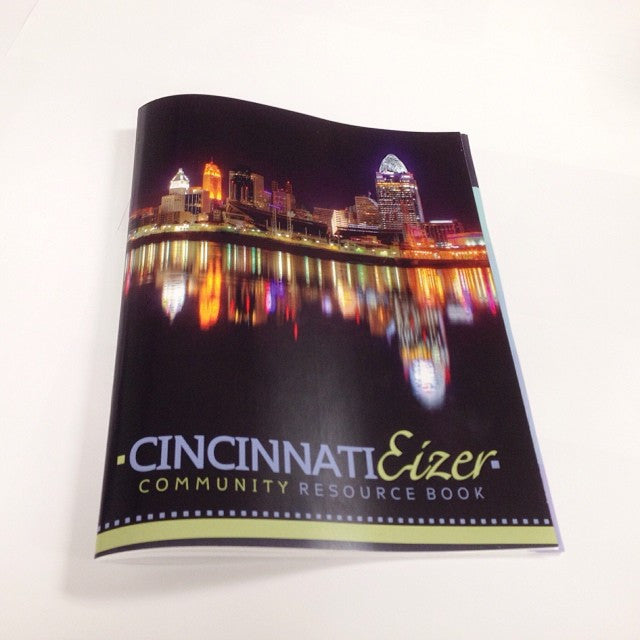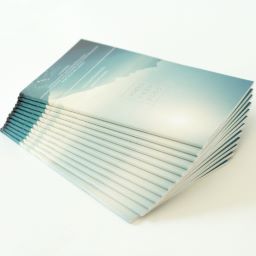The Crucial Overview to Understanding Booklet Printing Options and Techniques
The process of booklet printing entails several considerations that can substantially influence the final item. From picking the proper style and size to comprehending the subtleties of binding methods, each selection plays a necessary duty. Furthermore, factors such as paper supply and printing methods more influence the effectiveness of the pamphlet. As one browses these choices, it comes to be essential to grasp exactly how they adjoin and what that implies for the general end result.
Recognizing Booklet Sizes and styles
When considering booklet printing, understanding the various formats and dimensions offered is crucial for accomplishing the desired discussion. Pamphlets can be generated in various formats, consisting of saddle-stitched, spiral-bound, and perfect-bound, each offering distinct benefits. Usual dimensions range from common letter (8.5 x 11 inches) to smaller sized choices like A5 (5.8 x 8.3 inches), permitting flexibility based on content and target audience.Selecting the ideal size can affect both the design and viewers engagement. Larger dimensions may suit aesthetically driven material, while smaller sized layouts might be extra user-friendly and mobile. Furthermore, the variety of pages influences the option of binding technique, as thicker booklets might need stronger bindings. Eventually, understanding these aspects permits for a much more tailored strategy, making sure that the last product straightens with the intended message and aesthetic, improving the general performance of the communication.
Choosing the Right Paper Stock

Binding Methods: Options and Considerations
When it pertains to binding techniques for brochures, a number of alternatives are offered, each with distinct benefits. Saddle stitch binding provides a cost-efficient solution for thinner brochures, while perfect binding techniques give an even more polished search for thicker publications. Wire-O binding sticks out for its resilience and convenience of usage, making it ideal for files that require flexibility.
Saddle Stitch Binding
Saddle stitch binding supplies a sensible and cost-effective remedy for putting together brochures, making it a popular choice among authors and companies. This binding approach includes folding sheets of paper in half and stapling them along the fold line, developing a neat and organized appearance. Normally appropriate for pamphlets with a lower web page count, saddle sewing is suitable for magazines, sales brochures, and educational products. The simpleness of this method permits quick manufacturing and is often preferred for marketing products or brief runs. It is vital to keep in mind that saddle stitch binding may not be suitable for thicker booklets, as the back might not hold up under raised weight. Generally, it continues to be a trusted choice for several printing jobs.
Perfect Binding Strategies
Perfect binding is an extensively utilized method that offers a sleek and professional coating to booklets and publications. This technique includes gluing the web pages together at the spine using a strong adhesive, permitting a tidy edge and the capacity to hold a bigger number of web pages contrasted to saddle stitching. Perfect binding is especially suitable for thicker pamphlets, such as brochures and annual records, where a durable, flat spine is desired. In addition, it provides the alternative for a printed cover that can be made to boost visual appeal. Considerations such as page count, paper weight, and the intended usage of the booklet ought to be taken right into account, as they can affect toughness and overall top quality.
Wire-O Binding Options
Wire-O binding, recognized for its longevity and adaptability, provides an exceptional choice for booklets that need very easy web page turning and an expert look. This binding technique employs a series of steel loopholes that hold pages safely, allowing them to lie level when open. It is specifically ideal for presentations, directories, and guidebooks because of its robust nature. Wire-O binding is offered in various colors and sizes, accommodating various web page counts and thicknesses. Furthermore, it allows the incorporation of covers and tabs, improving the booklet's overall aesthetic. Factors to consider for Wire-O binding include the choice of cable color, the dimension of the loops, and the extent of customization wanted, every one of which can profoundly affect the end product's look and performance.
Digital vs. Offset Printing: Which Is Best for You?
When picking a printing method for pamphlets, recognizing the distinctions in between digital and counter printing is crucial. Digital printing makes use of modern technology to produce top notch prints quickly and cost effectively, making it excellent for brief runs or projects needing quick turn-around times. It enables personalization, supplying the capacity to publish on-demand with minimal waste.In comparison, offset printing is a traditional technique that excels in producing big quantities with consistent top quality. It involves transferring ink from a plate to a rubber covering, after that to the paper, which results in precise details and dynamic colors. Offset printing usually calls for longer arrangement times and is a lot more economical for navigate to this website larger volumes.Ultimately, the selection between digital and counter printing depends on job demands, spending plan, and wanted amount. For tiny, time-sensitive tasks, digital might be the very best choice, while offset might be more effective for bigger, top notch manufacturings.

Creating Your Pamphlet: Tips and Ideal Practices
When designing a pamphlet, cautious interest to format, font style choice, and color use can greatly enhance its efficiency. A well-structured layout overviews the reader's eye, while appropriate font styles ensure readability and convey the preferred tone. Furthermore, effective use of color can evoke feelings and highlight essential details, making the total layout more impactful.
Selecting the Right Design
Exactly how can one properly select the right format for a brochure? Initially, it is important to assess the pamphlet's function and target market. A tidy, organized layout improves readability and engagement. Making use of a grid system can aid in lining up components regularly, producing an expert look. Additionally, including visual pecking order through differing dimensions and positionings of photos and message can assist the visitor's eye and highlight vital details. It is also vital to leave sufficient white area, which avoids congestion and enables much better emphasis. Ultimately, testing different layouts with mock-ups can offer understanding into just how the style carries out in real-world scenarios, guaranteeing that the end product satisfies both visual and functional demands.
Selecting Ideal Font Styles
A well-chosen typeface can significantly boost the general layout of a booklet, complementing the format and reinforcing the material's message. The option of font styles must take into consideration readability, particularly for body message, as it guarantees the information is accessible to all viewers. Sans-serif typefaces are typically favored for digital formats, while serif typefaces can provide a standard feeling in published products. It's a good idea to limit font options to 2 or three to maintain visual comprehensibility. Furthermore, font dimension plays a vital role; headings ought to be distinctive yet not overwhelming, while body message ought to fit for analysis. When choosing fonts, positioning with the brochure's theme and target audience is important for efficient communication and visual appeal.
Efficient Use Color
Color offers as an effective tool in brochure style, shaping assumptions and leading viewers emotions. It can evoke feelings of depend on, calmness, or excitement, depending on the hues chosen. Designers must consider color concept concepts, guaranteeing that the chosen palette aligns with the booklet's message and target market. For example, using cozy shades like red and orange can develop urgency, while cooler tones like green and blue foster tranquility.Additionally, contrast plays an essential duty; corresponding colors can boost readability and visual appeal. Consistency in color usage throughout web pages additionally enhances brand name identity and communication. Inevitably, effective shade execution not only records interest however also enhances the pamphlet's objective, making it an check these guys out important aspect of effective style.
Ending Up Touches: Coatings and Special Results
While numerous take into consideration the web content and format of a pamphlet the most vital components, the ending up touches, such as finishings and special effects, play a crucial role in improving its overall allure. Coatings can offer defense and durability, making sure that the pamphlet holds up against damage. Matte surfaces offer an innovative, non-reflective surface, while glossy coatings can make shades appear more lively and distinctive. Special impacts, like embossing or foil stamping, add a responsive measurement that can produce a remarkable perception. These methods can highlight particular locations, drawing attention to essential information or creating visual rate of interest. In addition, UV finishing can give a high-shine surface that boosts the total look.Together, these ending up touches not only improve the booklet's visual however additionally connect professionalism and reliability and interest to information, ultimately leaving a lasting impact on the visitor.
Cost Considerations for Booklet Printing
Comprehending the various cost considerations for brochure printing is vital for services and organizations intending to enhance their spending plans. Trick aspects influencing prices include the selection of binding, ink, and paper approaches. Greater quality products, such as superior paper or specialized inks, typically raise the general cost. Furthermore, the size and web page count of the pamphlet play a substantial function; larger pamphlets need even more sources and time to produce.Another important factor to consider is the printing method, whether electronic or offset, as each has its own pricing framework and viability for various quantities. Companies should likewise consider design costs, which can vary based upon intricacy and the use of professional solutions. Eventually, delivery and handling costs can include in the total amount, particularly for huge orders. By evaluating these elements, organizations can make educated decisions that line up with their economic capabilities while achieving the desired quality in their published materials.
Frequently Asked Inquiries
What Are the Ecological Influences of Pamphlet Printing?
The ecological impacts of booklet printing include deforestation from paper production, carbon exhausts from transport, and waste generation from thrown out materials - Booklet Printing. Sustainable techniques, such as using recycled paper and environmentally friendly inks, can reduce these effects
Just How Can I Ensure Shade Accuracy in My Brochure?
To guarantee shade accuracy in a booklet, one should use calibrated screens, employ expert shade profiles, perform examination prints, and choose high-grade printing solutions that provide color matching and proofing alternatives for ideal outcomes.
What Is the Normal Turnaround Time for Brochure Printing?
The normal turn-around time for pamphlet printing varies depending upon the intricacy and quantity - Booklet Printing. Generally, it ranges from a couple of days to 2 weeks, influenced by variables such as printing methods and finishing demands
Are There Minimum Order Quantities for Brochure Printing?

Can I Print Booklets in Multiple Languages?
Publishing booklets in multiple languages is feasible. Several printing solutions use options for bilingual or multilingual formats, permitting for effective interaction. Mindful preparation assurances that make components fit various languages without endangering readability or appearances. In addition, aspects my blog such as paper supply and printing methods further affect the efficiency of the booklet. When taking into consideration pamphlet printing, comprehending the numerous formats and sizes available is necessary for attaining the preferred discussion. When choosing a printing approach for booklets, understanding the distinctions in between electronic and offset printing is important. Furthermore, the size and web page count of the brochure play a substantial duty; larger brochures call for even more sources and time to produce.Another vital factor to consider is the printing strategy, whether electronic or countered, as each has its own pricing structure and suitability for different amounts. The environmental impacts of pamphlet printing consist of deforestation from paper production, carbon discharges from transportation, and waste generation from disposed of products.